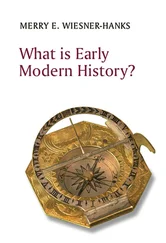R. Nisbet Bain - The Cambridge Modern History
Здесь есть возможность читать онлайн «R. Nisbet Bain - The Cambridge Modern History» — ознакомительный отрывок электронной книги совершенно бесплатно, а после прочтения отрывка купить полную версию. В некоторых случаях можно слушать аудио, скачать через торрент в формате fb2 и присутствует краткое содержание. Жанр: unrecognised, на английском языке. Описание произведения, (предисловие) а так же отзывы посетителей доступны на портале библиотеки ЛибКат.
- Название:The Cambridge Modern History
- Автор:
- Жанр:
- Год:неизвестен
- ISBN:нет данных
- Рейтинг книги:4 / 5. Голосов: 1
-
Избранное:Добавить в избранное
- Отзывы:
-
Ваша оценка:
- 80
- 1
- 2
- 3
- 4
- 5
The Cambridge Modern History: краткое содержание, описание и аннотация
Предлагаем к чтению аннотацию, описание, краткое содержание или предисловие (зависит от того, что написал сам автор книги «The Cambridge Modern History»). Если вы не нашли необходимую информацию о книге — напишите в комментариях, мы постараемся отыскать её.
The first series was planned by Lord Acton and edited by him with Stanley Leathes, Adolphus Ward and George Prothero.
The Cambridge Modern History Collection features all five original volumes:
Volume I: The Renaissance
Volume II: The Reformation, the End of the Middle Ages
Volume III The Wars of Religion
Volume IV: The 30 Years' War
Volume V: The Age of Louis XIV
The Cambridge Modern History — читать онлайн ознакомительный отрывок
Ниже представлен текст книги, разбитый по страницам. Система сохранения места последней прочитанной страницы, позволяет с удобством читать онлайн бесплатно книгу «The Cambridge Modern History», без необходимости каждый раз заново искать на чём Вы остановились. Поставьте закладку, и сможете в любой момент перейти на страницу, на которой закончили чтение.
Интервал:
Закладка:
The project of a crusade had received a grave blow in the death of Jem, which took place at Naples. The Archbishop of Durazzo undertook to organise a rising in Albania, but the project was frustrated by his accidental arrest at Venice. Charles’ own position was too doubtful to allow any more determined effort. Since his refusal to confer Sarzana and Pietra Santa upon Ludovico, the latter had been intriguing against his ally. Ferdinand of Aragon had sent to Sicily the great captain Gonzalo de Cordova with a fleet, ostensibly for defensive purposes. Venice was arming, as she said, against the Turk. Maximilian was afraid that the successes of Charles in Italy might lead him to claim the Imperial Crown. Negotiations took place at Venice resulting in a league between the Pope, the Roman King, Ferdinand and Isabella, Venice and Milan, for the protection of the confederates against the aggression of other powers then possessing states in Italy. The league purported to be defensive, but was in reality offensive. Florence alone, still friendly to France and relying on her good offices to recover Pisa, was not a party to it. The transaction was communicated to Commines, French ambassador to Venice, on the 1st of April. Charles was soon informed of the danger rising in his rear, but did not leave Naples till the 21st of May.
Fortunately for the invader, Louis of Orleans was still at Asti with a handful of troops. In a few days he had collected 2,000 men. The Duke of Bourbon, the wise vicegerent of the King in France, was pressed to send aid, for the troops of Milan threatened an attack, if the place was not surrendered. But Ludovico, timid as usual, allowed the moment to pass. Reinforcements soon put Asti in a position for defence, and secured for the King his line of retreat. Meanwhile Ludovico was celebrating the investiture of Milan, which he had at length permission to proclaim. In June Louis was in a position to occupy the city of Novara by the invitation of the citizens; shortly after, the citadel surrendered. Ludovico was paralysed; it is thought that if the Duke of Orleans had marched on Milan he would have met no serious resistance.
Meanwhile the King had left Naples with some 1,200 French lances, 4,000 Swiss, and 2,000 Gascon arblasters. The other half of his army, partly Italians, was left with Montpensier, the viceroy, to deal with Ferrantino, who had recently landed in Calabria with Spanish aid. On reaching Rome, the King found the Pope had fled to Orvieto. Florence Charles avoided, since the Florentines claimed, and he was determined to refuse, the surrender of the fortresses, especially of Pisa. At Pisa he found himself equally unable to satisfy the Pisans. At Spezia, against all sound advice, he detached 500 horse and 2,000 foot to operate against Genoa with the aid of the fleet and the Genoese exiles. But he had the forethought to send on a force to occupy Pontremoli, which capitulated. The Swiss, violating the terms of the surrender, sacked and burned the place, destroying valuable stores.
The possession of Pontremoli gave the French access to the pass. Beyond the summit lay the army of the League. The chief part of the army, about 40,000 strong, was in Venetian pay, and commanded by the Marquis of Mantua. Beside men at arms there were some thousands of Stradioti, the ferocious light cavalry of Albania. The chief part of the forces of Milan was engaged in the siege of Novara, but a Milanese contingent was present. Over the steep pass the Swiss, in sign of penitence for their late excesses, dragged by hand the heavy cannon, each ordinarily drawn by thirty-five horses; and French nobles, notably la Tremouille, did not disdain to work beside them. At Fornovo the French vanguard came into touch with the Stradiot advanced posts, and halted. The rest of the army, coming up, encamped for the night in great lack of provisions. Negotiations were opened for a free passage, but came to nothing. The next day the French advanced.
At Fornovo the valley of the Taro is of moderate width. On the right bank were posted the allies and there was their fortified camp. The French resolved to cross the river, and to force their way along the left bank. The river had been much swollen by a thunderstorm during the night and rain was still falling. Thus the French army, having once successfully effected its crossing, which it did undisturbed, was partly protected. The vanguard was expected to bear the main weight of the attack, and included the bulk of the artillery, with 3,000 Swiss, and a strong body of men-at-arms. This body, moving on too fast, became separated from the rest of the army, and had only to sustain a trifling charge of the Milanese horse under the Count of Caiazzo. Little use was made on either side of the artillery. The main attack was made by the Marquis of Mantua. Though it was originally directed on the centre, the necessity to deviate for a ford made it really an attack on the rear under Louis de la Tremouille. The King’s main battle then wheeled round and took up a position to the left of the rear guard, facing to the rear. Fortunately, the baggage, which was moving along the hills and away from the river, attracted the Stradiots, and diverted them from serious work. The Italian horse, who charged the King’s rear and centre, were outflanked and soon put to flight, and were pursued to the ford from which they came. More than half the army of the allies never came into action, but the whole of it was thrown into confusion and many fled. The rout was partly stopped by the King’s prisoners Pitigliano and Virginio Orsini, who escaped during the battle. But another attack was out of the question, and the French even thought of assuming the offensive. Perhaps a well-timed charge by the Marshal de Gie with the vanguard might have turned the defeat into a rout, but the French had every reason to be satisfied. They were able after a rest to march off” during the night, and reached Asti on the 15th of July practically unmolested. The Venetians claimed the victory, but the fruits of victory were with the French.
At Asti the King found things in forlorn case. The expedition against Genoa had failed. The French fleet was captured in Rapallo by a superior Genoese force and all the plunder of Naples was lost. The Duke of Orleans was besieged at Novara, and his garrison were at the last pinch. Bessey was sent in haste to raise a fresh force of Swiss, but by the time they arrived, 20,000 strong, Novara had capitulated on easy terms, and Ludovico showed himself inclined for peace. Louis of Orleans was anxious to use the Swiss against Milan, but Charles, perhaps disgusted with the shifting fortune of war, concluded at Vercelli a separate peace with Ludovico, and on the 15th of October he crossed the Alps.
Milan was left in statu quo, except that the Castelletto of Genoa was left for two years as a pledge of good faith to France in the hands of the Duke of Ferrara. Venice had profited by the trouble of Naples to acquire four ports, Monopoli, Trani, Brindisi, and Otranto, on the easterly coast of Apulia. Florence was by agreement to receive back her towns, but the corrupt disobedience of French lieutenants gave Pisa to the Pisans, Sarzana to the Genoese, and Pietra Santa to Lucca. In Naples the first descent of Gonzalo had not been fortunate. His army was defeated at Seminara by a band of Swiss. But Ferrantino, nothing daunted, presented himself at Naples with his fleet. Repulsed at first, a chance gave him the advantage, and his supporters gained the town. Montpensier, Yves d’Allegre, and Etienne de Vesc were shut up in the Castel Nuovo. The Provinces, North and South, rose against the French. The Colonna left them. Aubigny with difficulty held out against Gonzalo in Calabria. Montpensier in despair concluded a conditional capitulation, and, when Precy failed to relieve him, abandoned the city of Naples. In February, 1496, all the castles of Naples were in the hands of the Aragonese. The French still held Ariano, Gaeta, and a few other posts. In July Precy and Montpensier surrendered to Gonzalo and Ferrantino at Atella. The chief part of the French prisoners, including Montpensier, succumbed to the climate and to disease. Aubigny gave up the struggle in Calabria. On the death of Ferrantino, October 6, 1496, Federigo, his uncle, succeeded. Soon after (November 19) Gaeta> the last important stronghold of the French, surrendered. The king of France still meditated another expedition, and concluded, towards the end of 1497, an alliance with Aragon for a joint conquest. Five months later an accident cut short his life. The only son of his marriage with Anne of Britanny had died in infancy. His successor, Louis of Orleans,, inherited his plans of conquest, but with a difference.
Читать дальшеИнтервал:
Закладка:
Похожие книги на «The Cambridge Modern History»
Представляем Вашему вниманию похожие книги на «The Cambridge Modern History» списком для выбора. Мы отобрали схожую по названию и смыслу литературу в надежде предоставить читателям больше вариантов отыскать новые, интересные, ещё непрочитанные произведения.
Обсуждение, отзывы о книге «The Cambridge Modern History» и просто собственные мнения читателей. Оставьте ваши комментарии, напишите, что Вы думаете о произведении, его смысле или главных героях. Укажите что конкретно понравилось, а что нет, и почему Вы так считаете.












